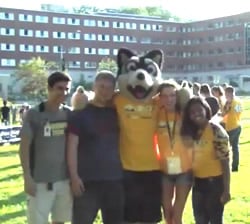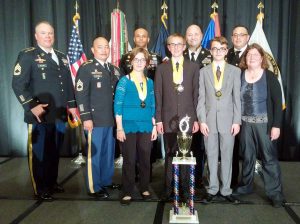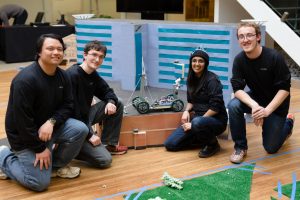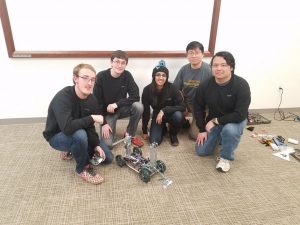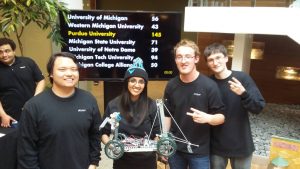
HOUGHTON — For five Michigan Technological University students this year, their homework includes their actual home.
This is the first year for Tech’s Sustainability Demonstration Home, where the students are tracking their energy and waste, as well as carrying out projects on how to reduce energy use.
“This semester, we’re kind of working side by side,” said Rose Turner, a fourth-year environmental engineering student and the only of the house’s residents on the Enterprise team.
Cooper Mineheart, a second-year mechanical engineering student, has learned what he can and can’t recycle.
Thomas Richter, a fourth-year mechanical engineering student, said his consciousness of how small changes add up will stick with him after he leaves the house.
 The Fifth Annual Rekhi Innovation Challenge kicked off on Friday Nov. 10, 2017. Three Enterprise teams are competing for funding this year: Blue Marble Security, BoardSport Technologies and Velovations. The Rekhi Challenge is a crowdfunding competition to help promote and support student innovation and entrepreneurship through Michigan Tech’s crowdfunding site, Superior Ideas. The team that raises the most money will receive a monetary match of up to $5,000.
The Fifth Annual Rekhi Innovation Challenge kicked off on Friday Nov. 10, 2017. Three Enterprise teams are competing for funding this year: Blue Marble Security, BoardSport Technologies and Velovations. The Rekhi Challenge is a crowdfunding competition to help promote and support student innovation and entrepreneurship through Michigan Tech’s crowdfunding site, Superior Ideas. The team that raises the most money will receive a monetary match of up to $5,000.
 Three Michigan Tech student teams have been chosen to compete in the Accelerate Michigan Innovation Competition in Detroit on Nov. 16, 2017. The student teams will compete for a total of $21,000 in funding.
Three Michigan Tech student teams have been chosen to compete in the Accelerate Michigan Innovation Competition in Detroit on Nov. 16, 2017. The student teams will compete for a total of $21,000 in funding.


